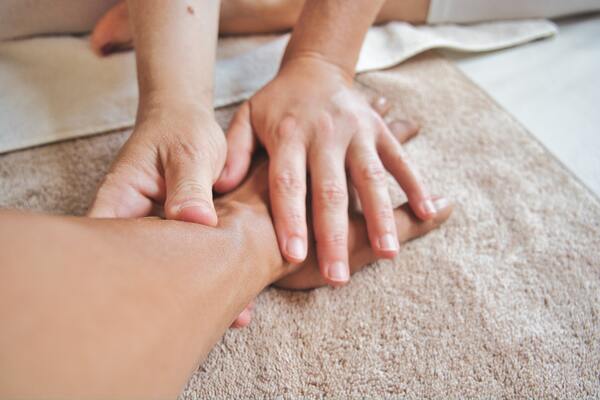If osteoarthritis has been identified in one of your joints—your knee, hip, shoulder, or another—you probably want to learn how to reduce joint discomfort and halt the spread of the condition. You can accomplish both with the aid of physical therapy.
Benefits
Arthritis patients can benefit greatly from physical therapy, especially when it incorporates exercise. These include:
- Helping work around injuries: People who are hurt or injured may move in ways that result in more harm or pain. In order to work around these injuries safely, physical therapy can assist. For instance, a physical therapist can show someone how to use a walker without hunching over or adopting a bad posture that hurts their back.
- Strengthening muscles and improving joint mobility: People with arthritis may be reluctant to exercise because they believe it will worsen their condition. They can exercise safely thanks to physical therapy, which also strengthens their muscles and joints. This can encourage general strength, enhance mobility, and lessen pain caused by a sedentary lifestyle.
- Reducing pain: Physical therapy may help Trusted Source reduce pain by strengthening muscles and joints and reducing secondary complications from a sedentary lifestyle.
- Modifying the environment: Different environmental changes, including the use of specific devices, may reduce the symptoms of arthritis. Physical therapists may suggest these changes and instruct patients on how to use aids like canes and braces.
- Working around injuries: Physical therapists can instruct patients on how to cope with pain and injuries in a way that does not exacerbate them.
What Services Does A Physical Therapist Offer
Maintain Or Increase Joint Range Of Motion
A stiff joint may result from osteoarthritis. Your capacity to flex and extend a joint can be improved with physical therapy. The joint function can be significantly altered by even minor increases in a joint’s range of motion. To get into and out of low chairs comfortably, for instance, you might be able to get an arthritic knee to bend just 10 more.
Strengthen The Muscles That Support An Arthritic Joint
In a joint where osteoarthritis has worn away the protective cartilage, there may be painful friction between the bones. By making the nearby muscles that support the joint stronger, you can lessen this friction. To help you increase strength and stability in your joints, a skilled physical therapist can help you identify areas of impairment and teach you how to address these impairments with functional strengthening.
Improve Balance
A common symptom of osteoarthritis is impaired balance, which can be brought on by weakened muscles, deteriorated joint function, restricted mobility, and other issues. Skilled physical therapists may add balance exercises to your treatment plan in addition to the functional strengthening exercises mentioned above. These exercises simulate daily functional tasks and include changes in terrain/surface, walking distances, and elevation in an effort to improve balance and lower your risk of falling.

Adjust Posture
Arthritic joints can be relieved of stress by having good posture. You can learn from your physical therapist how to sit, stand, and walk with better posture and less joint stress. This could involve making changes to the surroundings at home, at work, or even in your car.
Your daily activities can be made easier by making simple adjustments, such as moving your car seat to a more comfortable position.
Use Assistive Devices
Depending on how severe the condition is, a person may need to use a walker, cane, crutches, splints, or shoe inserts to help relieve pressure on some arthritic joints.
Knowing when and how to use these assistive devices can help reduce the chance of harm or further impairment. For instance, a cane might not be necessary for errands or longer walks around the house, but it might be useful. A skilled physical therapist can teach you how to properly fit and use certain assistive devices while also fostering an environment for you to work toward your functional independence.
A Physical Therapy Session
A physical therapy session’s objective is to instruct you on how to carry out the steps in your treatment plan for yourself, such as carrying out specific exercises or learning the best way to apply hot and cold compresses. The focus of the visits, which are frequently brief—about an hour—is on identifying issues with your physical function and providing you with care strategies you can use at home.
Consider your complaint and the activities you hope to be able to perform once physical therapy is complete before you see the PT. Your objective might be to avoid pain when getting in and out of your car, reaching up on your toes or with your arms raised to reach items in your kitchen cabinets, going for a walk, or doing your job without hip, knee, or foot pain, or even walking or running a 5K. Then, your PT can collaborate with you to create a strategy that will help you reach your objectives.
Most of the time, you don’t need to visit the PT every week. If your program needs to be updated, regular visits every few months are sufficient. You can go back to the physical therapist to update your exercise regimen and treatment plan whenever your health changes, such as when your arthritis flares up and you fall behind in your exercise regimen or another joint becomes involved and affects another area of function.
Learning the exercises from a physical therapist and long-term home practice is essential for a positive outcome. Consistent practice is crucial because improvement happens gradually over time as the body gradually becomes stronger and more skilled.
Safety Tips For Exercising With Arthritis
As long as you exercise safely, exercise has many advantages for arthritis. Before beginning an exercise program for arthritis Trusted Source, consult your doctor or physical therapist. They can suggest modifications and suggest exercises that are appropriate.
- Make sure to stretch. Before every session, warm up, and cool down at the end. Before working out, stretch all of your major muscle groups, paying special attention to your joints.
- Take it slow. Work within your limits as you gradually increase the length of your workouts. Take as many breaks as you need, paying particular attention to your body if you’re experiencing a flare-up. After each workout, give yourself several days to recover.
- Perform low-impact exercises. As a result, the joints experience less strain or stress. They include gardening, swimming, and water therapy. You can also include exercises to increase strength, balance, and flexibility. Exercises that exacerbate your symptoms, such as swelling, pain, or stiffness, should be avoided.



